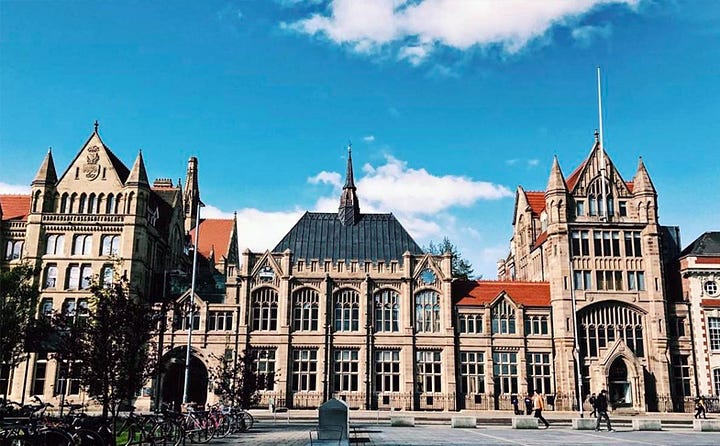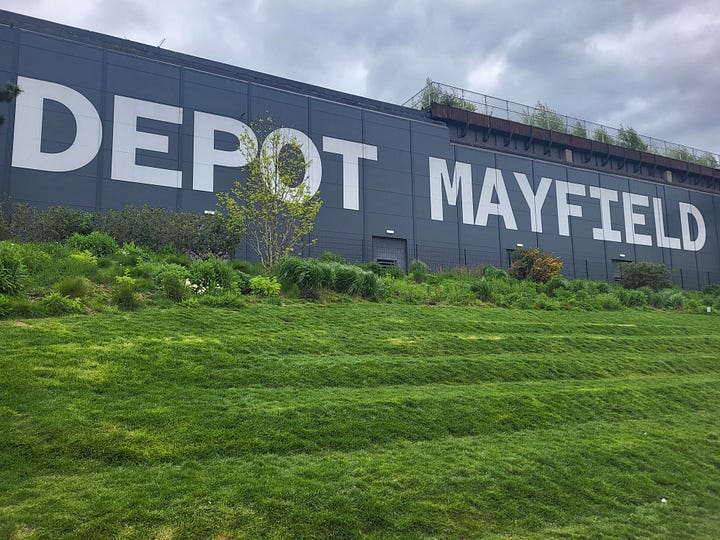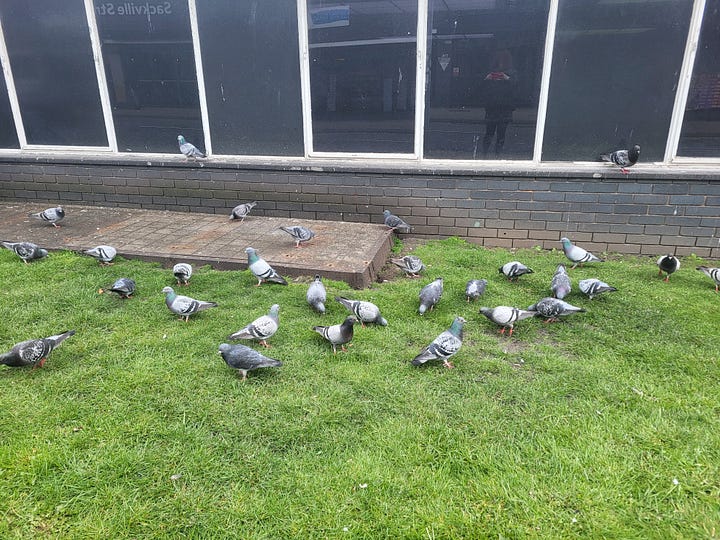A new tour, Manchester Histories Festival and some books for you!
June is going to be one of those rare occasions when you'll see Charlotte and Erica in the same place. We'll be launching a new tour AND hanging out at the Histories Festival on the 9th!
Manchester Histories Festival Celebration Day


Elemental Histories will be part of the Manchester Histories Festival! On Sunday the 9th of June we will have a stall at the Celebration Day in Whitworth Hall on
Manchester University Campus.
We’ll be there from 12pm to 4pm with a table packed full of fun stuff from the very fabric of the city itself to see, handle, and, if you’re brave, maybe smell ;-)
We’ll be talking water, soil, plants and the other materials that make up the elements of Manchester’s urban environment, bringing you a new experience of the city and its environmental past, present and future.
We’d love to see you there!
We have more tour dates for you!
Before June you’ve got a chance to get in a quick tour- we’ve got two in May:
Saturday 25 May, 1pm: "If Stones Could Talk": A Historical Walking Tour of Manchester's Stone
Sunday 26 May, 1pm: "More than a Foul Drain": A Historical Walking Tour of Manchester's Water
And then in June itself we’ve got a whole new tour for you to experience! Make way for AIR:
Thursday 6 June, 1pm: “The Lungs of the City”: A Historical Walking Tour of Manchester’s Air
Friday 7 June, 1pm: Air
Saturday 8 June, 11am: Stone
Saturday 8 June, 2pm: Air
Sunday 9 June, 12-4pm: Manchester Histories Festival Celebration Day stall! Whitworth Hall.
Friday 14 June, 1pm: Water
Saturday 15 June, 11am: Air
Sunday 16 June, 1pm: Stone
Note our sneaky Monday tour in July- Erica will be in Manchester again and couldn’t resist:
Monday 1 July, 1pm: Water
Saturday 27 July, 1pm: Air
Sunday 28 July, 1pm: Stone
To book the Air Tour: https://www.eventbrite.co.uk/e/the-lungs-of-the-city-a-historical-walking-tour-of-manchesters-air-tickets-901383090087
To book the Stone Tour: https://www.eventbrite.co.uk/e/if-stones-could-talk-a-historical-walking-tour-of-manchesters-stone-tickets-899147142307
To book the Water Tour: https://www.eventbrite.co.uk/e/more-than-a-foul-drain-a-historical-walking-tour-of-manchesters-water-tickets-899145316847
Introducing our new tour:
‘The Lungs of the City‘: A Historical Walking Tour of Manchester’s Air
Okay so this one was difficult to put together, and honestly we are still working on it (probably at the very moment you are reading this newsletter!). How do you take people on a tour of something as invisible as air?
Well- you start by changing your ideas about what ‘invisible’ actually means! Once you start thinking about it, is air really that invisible after all? It carries smells, you feel it on your face, it carries particles, and it is absolutely vital for life.
Join us to breathe along with the lungs of the city. We’ll meet at Piccadilly Gardens and walk to Mayfield Park. On the way we’ll chat about smoke, smog, miasma, birds, cotton fibres and planes. We’ll talk about what happens when air becomes breath and the ways this element has shaped the lives and health of Manchester’s residents since the 18th century.
And as with all our tours, we’ll think about that divide between humans and nature- does it really exist?


And finally- our spring recommended readings!
Dirt: The Erosion of Civilizations by David R. Montgomery
As the title implies, the star of David Montgomery’s book is dirt. He tells the story of the relationship between dirt and humans starting with the beginnings of settled agriculture some 12,000 years ago and continues into the late 20th century. Montgomery argues that what is constant across this huge sweep of history is that civilizations who conserve their soil thrive while civilizations who let their soil erode fall.
Montgomery was trained as a geologist, and that is where the strength of this book lies. He talks about the material processes by which dirt is made, its composition, and how it erodes. His dirt is not abstract or metaphorical; it is what you feel when you put your hand on the ground. However, Montgomery overstates his case. The way he writes, it seems as though dirt is the only reason civilizations rise and fall. This is not the case. History is complicated. Dirt may be one reason why a city or country might flourish or fail, but there are always other reasons. So if you choose to pick up Montgomery’s book, read it with a grain of salt (or a pinch of dirt, as the case may be).
Dirt is also the inspiration for our current Instagram series on “Urban Soil and Us.” Check it out!
Eden by Tim Lebbon
Billed as “horror eco-fiction,” Eden can be read as a cautionary tale of what might happen if we believe humans and nature are two separate entities in constant conflict. Not too far in the future, humans have decided to depopulate thirteen areas spread across the globe, rename them Virgin Zones, and police their borders so that no humans can cross into the “unspoiled wilderness.” Frankly, this premise is not very different from the United States’ practice of forcibly removing Native Americans from their homes and declaring the newly empty space a national park.
But unlike national parks–which now see millions of visitors enjoying the outdoors every year–Eden’s Virgin Zones become utterly inhospitable to the few humans who enter them. The main action of the books focuses on a group of ultra-marathoners who attempt to sneak into and race across Eden, the oldest of the Virgin Zones. There, they are confronted with a treacherous environment that threatens not only their race but their lives. The book has plenty of fast-paced, nearly cinematic action sequences to keep you reading late into the night.
The Adventures of Alexander von Humboldt by Andrea Wulf, illustrations by Lillian Melcher
Alexander von Humboldt was an explorer, writer, and one of the first people to describe nature as an ecosystem. He argued that we should think of nature as an interconnected web of living and non-living beings. This was a radical idea in the early 19th century, when most of his colleagues in Europe were focused on identifying and categorizing discrete species. Von Humboldt formed many of his ideas about the environment when he was traveling through Latin America with botanist Aimé Bonpland from 1799-1804.
This graphic novel is an amazing book for so many reasons. First is the storytelling. Andrea Wulf brings to life von Humboldt and Bonpland’s early 19th century excursion across Latin America with immersive physical detail and a wry turn of phrase. As readers we join the men as they marvel at new plants and take in mountain top views. We are also there when they suffer from heatstroke on the Llanos, are eaten alive by mosquitoes on the Orinoco river, and nearly freeze to death summiting Mount Chimborazo. But Wulf tells these harrowing tales with a touch of self-deprecating humor so we remember that even amidst these trials there is still a sense of joy in exploring the environment.
The other amazing part of this graphic novel is the artwork. Lillian Melcher’s casual style of cartooning pairs well with the personalized storytelling. But what really elevates the work is how she blends her cartoons with 19th century paintings, von Humboldt’s own notes and maps, and dried botanical specimens. The resulting whimsical collage is reminiscent of a traveler’s scrapbook. Even though we can’t travel with them, in reading The Adventures of Alexander von Humboldt we can feel like we were there.





